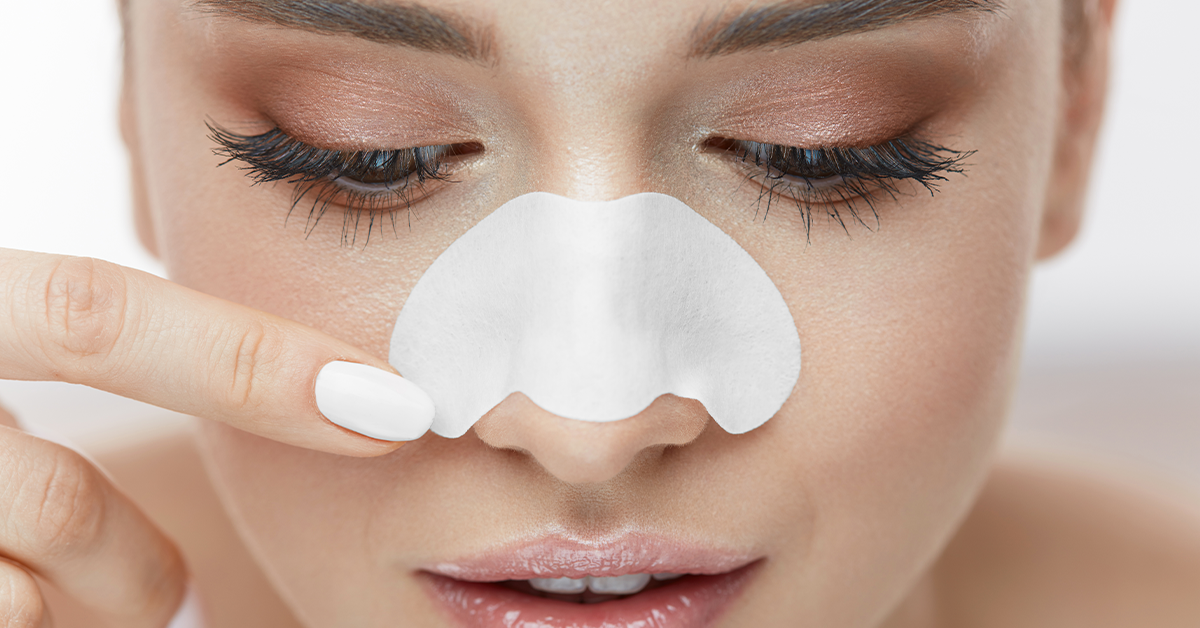
Acne comes in many forms. When customers need to treat their acne, they first research to find out which kind they have and then seek particular treatments to clear it faster and minimize damage to their skin.
Acne patches, dots, strips and other skincare treatments are growing in popularity for a number of reasons:
- Versatile – Patches can be cut into different shapes and sizes, made from different materials and combined with different formulas all to build a product that serves a unique purpose and delivers on specific benefits to your customers.
- Discreet – Acne patches are small and can be white or transparent, which blends in with the skin for undetectable wear.
- Mess-Free – Alternative treatments can include creams, ointments and serums which can be messy to apply or wear, especially overnight. Some creams even bleach or discolor fabric. The patch material helps keep ingredients in place, improving their effectiveness and avoiding unwanted messes.
- Protective – Not only do patches deliver treatment to blemishes, but they also act as a barrier and prevent the wearer from picking or touching acne, mitigating irritation, allowing it to heal faster and reducing the risk of scarring.
If your brand is looking to offer acne solutions, you’ll need a variety of options to meet the growing needs of educated customers looking for a product that will treat their specific type of acne. Here are some of the top acne concerns and how patches can help.
Blackheads
Blackheads are a mild type of acne caused by clogged pore. When the opening of a hair follicle is plugged, it can cause sebum to build up behind it; if the sebum is closed by the skin, it becomes a whitehead. It is remains open, the air causes oxidation, which leaves the surface looking dark or black. Squeezing blackheads can remove sebum, but can also damage the skin and transfer dirt and oil from fingers.
Pore strips absorb dirt and sebum, which can help reduce pore size and the appearance of blackheads while drawing out impurities to ward off clogged pores.
Papules
This classic pimple, or zit, this red or pink bump that begins, like the blackhead, with a clogged pore. The extra oil feeds propioni acnes bacteria, which multiply and build up against the follicle. With enough pressure, it ruptures and the material spills out inti the surrounding skin, causing irritation and inflammation. For those with relatively clear skin but get occasional breakouts, it’s likely that they just need spot treatments to zap zits as they appear.
Acne Plaster Patches are transparent patches containing tea tree oil and Salicylic acid, both of which are known to vanquish acne and treat blemish-prone skin. Salicylic acid can help unclog pores with its anti-acne and skin conditioning properties. Tea tree oil contains antioxidant properties as well as effective antimicrobial and disinfectant properties, making these ingredients especially ideal to treat acne. The material of the patch is extremely adhesive, allowing the customer to wear it overnight. Because it’s transparent, it blends in with the skin making it possible to wear it for an extended period during the day without detection.
Whiteheads & Milia
Whiteheads occur when a clogged pore is covered with a thin layer of skin and appears white on the surface, which is how it gets its name. Milia are similar in appearance to whiteheads, but are harder and smaller on the skin.
Acne Colloidal Patches are adhesive patches made of hydrocolloid – a fluid-absorbing agent that is known to draw out impurities from the skin’s surface. Like any adhesive bandage, it helps to speed up the healing process by protecting the blemish from poking and prodding fingers, which can worsen irritation or break the skin. Hydrocolloid, specifically, absorbs sebum trapped within pores and keeps it away from the skin. Colloidal patches are cut into smaller dot shapes that comfortably cover the blemish without drying out the skin.
Cystic Acne
Cystic acne are infections under the skin. The main factors behind cystic acne are hormonal changes and can be very painful and cause lasting skin damage as well as emotional damage due to the severity of its effects on facial appearance.
Microneedle Patches are spot applications meant for treating cystic acne. An adhesive backing holds a water-soluble polymer chip with protrusions that contain Salicylic acid to help calm inflammation and prevent irritation. The treatment is painless and effective to deliver the effective ingredients deep into the skin. The polymer slowly dissolves, making this an excellent overnight option.
Meeting Customer Demands
There is already an understanding that acne treatments are created to treat specific kinds of acne or be used on certain skin types. By only offering only one acne-fighting product to customers, you may be missing the opportunity to reach other customers seeking solutions. Customers know that acne comes in many forms and are likely very educated on the type of acne that they have. That’s why it’s in a brand’s best interest to offer products that treat different kinds of acne to provide the best possible buying and user experience.